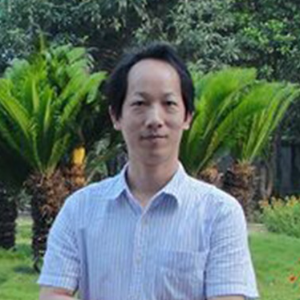Title : Catalysis for biomass utilization and selective hydrogenation
Abstract:
With the increasing consumption of energy, depletion of traditional fossil fuels, and much stricter environmental regulation, chemicals generated from biomass are gaining attention due to the zero CO2 balance. Transforming biomass into feedstocks requires highly efficient and robust catalysts as harsh conditions are frequently required. The key element is the understanding the reaction mechanism and designing of catalysts for such transforming, especially for its derived-chemicals, such as: ethanol, phenol and furfural. The gas phase dehydrogenation of ethanol to acetaldehyde faces a challenging problem which is sintering of the copper catalyst. The investigation into the synthetic protocols resulted in a highly active silica-supported copper catalyst that maintains its high activity even after 500 h time-on-stream.1-3 Cyclohexanone, which can be obtained by hydrogenation of phenol, is an important intermediate in the synthesis of caprolactam and adipic acid for nylon-6 and nylon-6,6, respectively. A one-step process where phenol is selectively hydrogenated to cyclohexanone is certainly preferred. As report, rhodium-based catalysts were studied, and the understanding of parameters such as particle size and active sites led to modification of the Rh catalyst, exhibiting an unparalleled performance of 96 % yield cyclohexanone coupled with the mild conditions (R.T. and 1 atm H2) of operation enables scale-up for industrial applications.4 In the transformation of furfural to g-valerolactone, research led to an optimized combination of Lewis and Brønsted acid sites that gave excellent yields in an open system at ambient pressure.5 This is in contrast to present requirements of high temperatures and autoclaves for the reaction. All designed catalysts have been well characterized so that an understanding of the structure-activity relationships can be obtained.6 The optimized catalysts exhibited excellent activity which opens up their potential for industry application and also gives helpful guides for the design of new catalysts.
Audience Take Away:
- IR of sorbed 2-pentanol probes hydrophobic/hydrophilic environment.
- A highly efficient Cu/SiO2 catalyst for non-oxidative ethanol dehydrogenation of ethanol.
- Catalyst preparation by ammonia evaporation with optimum loading lends robustness.
- Catalytic efficiency of Rh/Mg-Beta due to low atomic coordination and basicity.
- High selectivity in phenol hydrogenation to cyclohexanone at mild conditions.




